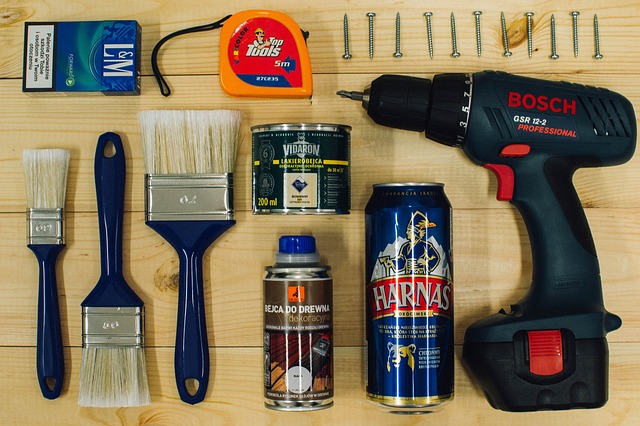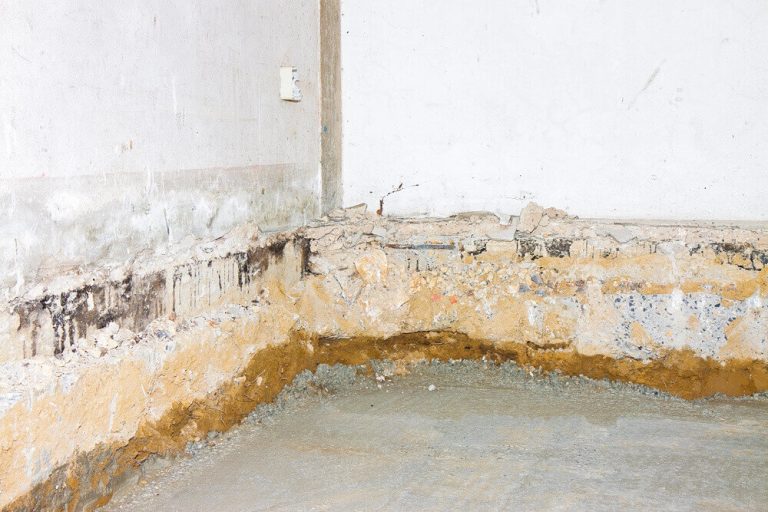What Do You Do About a Bowing Basement Wall?
Cracks in your foundation may occur naturally as a byproduct of the concrete drying. But sometimes, these cracks are not benign and are a sign of foundation problems. When cracks form because of foundation problems, they tend to grow with time if not addressed. This is especially the case for a bowing basement wall. If you’ve discovered a lateral crack in your basement wall that’s growing, your basement wall may be beginning to bulge or bow inward. If left alone, that deflection will only grow and the basement wall can become structurally compromised.
But what causes a bowing basement wall to happen in the first place? What can you do to repair it or prevent it? Let’s take a closer look at bowing basement walls and what can be done!
The Causes of Bowing Basement Walls
Concrete is a very strong material that we use in construction everyday. It’s what allows our skyscrapers to stand tall! But even still, concrete is not invincible. Even though your foundation is made of the same strong concrete, outside influences can eventually bring damage to it. The main culprit behind this damage?
Water.
How Does Water Affect Your Foundation?
When it rains, water seeps down into the soil. Eventually, that water reaches the water table and causes it to rise. When the water table rises to the point that it meets the foundation, it begins to press against the foundation floor and walls, creating what’s called hydrostatic pressure.
It may not happen quickly, but when your foundation is subjected to this immense pressure enough times, the concrete can weaken, crack, and even begin to move as the pressure pushes against it. That’s how a bowing basement wall begins.
It starts as a lateral crack, typically around the center of the basement wall. But that crack will start to grow as the deflection grows and becomes more visible. If not addressed, the bowing basement wall can compromise the stability of both the foundation and your home, leading to further structural problems.
What Other Problems Can Happen From a Bowing Basement Wall?
Your foundation walls and floor are meant to maintain a stable environment for your basement. Otherwise it would not be safe to use your basement for storage or as a finished room project. But a bowing basement wall means there is a crack or cracks that are growing and there is a structural problem going on. Those cracks also mean there’s an easy way for outside moisture and groundwater to directly invade your basement, leading to more problems such as…
- Mold growth
- Wood rot
- Small pests such as termites, ants, and dust mites
- Water damage from a wet or flooded basement
- Increased humidity in the basement
Mold in the home is notorious for causing damage to walls, furniture, and food items. But it can also be responsible for triggering allergic reactions, asthma symptoms, and even cause illness in those with weakened immune systems.
Wood rot is a group of fungal species responsible for breaking down dead wood and returning it to the soil. But it doesn’t know the difference between a dead soggy log in the middle of the woods and the timber supports in your basement. If wood rot should take hold, it can cause a great deal of damage to your basement’s wooden supports.
Termites and ants like to build their colonies in damp areas. Some termite species need certain levels of humidity to survive, meanwhile ants like different levels of humidity to keep their colonies comfortable. But to both, damp wooden supports make a tempting target for tunneling and creating their new homes.
Dust mites require moisture to survive, and a damp basement is perfect for them. They might not cause damage to your basement structurally, but they can certainly wreak havoc on anyone with dust mite allergies.
These are just a few of the problems that invasive moisture or groundwater can do to your basement. That also means more costly repairs and even potential health problems in your household.
But by addressing a bowing basement wall problem in a prompt manner, you can prevent these extra problems from harming your basement, you and your loved ones, and your wallet!
How to Repair a Bowing Basement Wall
Once you’ve discovered that you have a bowing basement wall problem, it’s recommended that you contact a foundation repair contractor to help.
There are several solutions that can be used to stabilize and reinforce your bowing basement wall. What determines the kind of solution needed is the deflection of the basement wall. Depending on how severe the deflection is, the solution needed can be…
- Carbon fiber wall straps
- Steel I-beams
- Helical tieback anchors
Carbon fiber wall straps are an ideal solution if the deflection is 2-inches or less. Carbon fiber is a very strong material that’s even used in vehicles like boats, cars, and even has aerospace applications.
Steel I-beams work well if the deflection is around 2-inches, but it can be used to reinforce a bowing basement wall with a deflection of up to 4-inches.
If your bowing basement wall has a deflection of around 4-inches, a foundation repair expert may recommend helical tiebacks to properly reinforce the wall and stop any further movement.
Choosing the Right Foundation Repair Contractor
There are many foundation repair contractors out there, but it’s important to do your research to make sure you’re getting a solution that will provide a reliable and lasting remedy. While reading into the different local foundation repair contractors near you, check to make sure that the company you’re considering meets at least these criteria…
- Decades of experience
- Strong warranty
- Licensed and insured
- Many positive online reviews that are easy to find
For one such foundation repair company that matches these requirements, consider calling ‘58 Foundations & Waterproofing for your foundation repair needs. They offer free inspections and price estimates, and they’ve been in business since 1958—that makes their lifetime warranty incredibly reliable!







